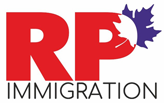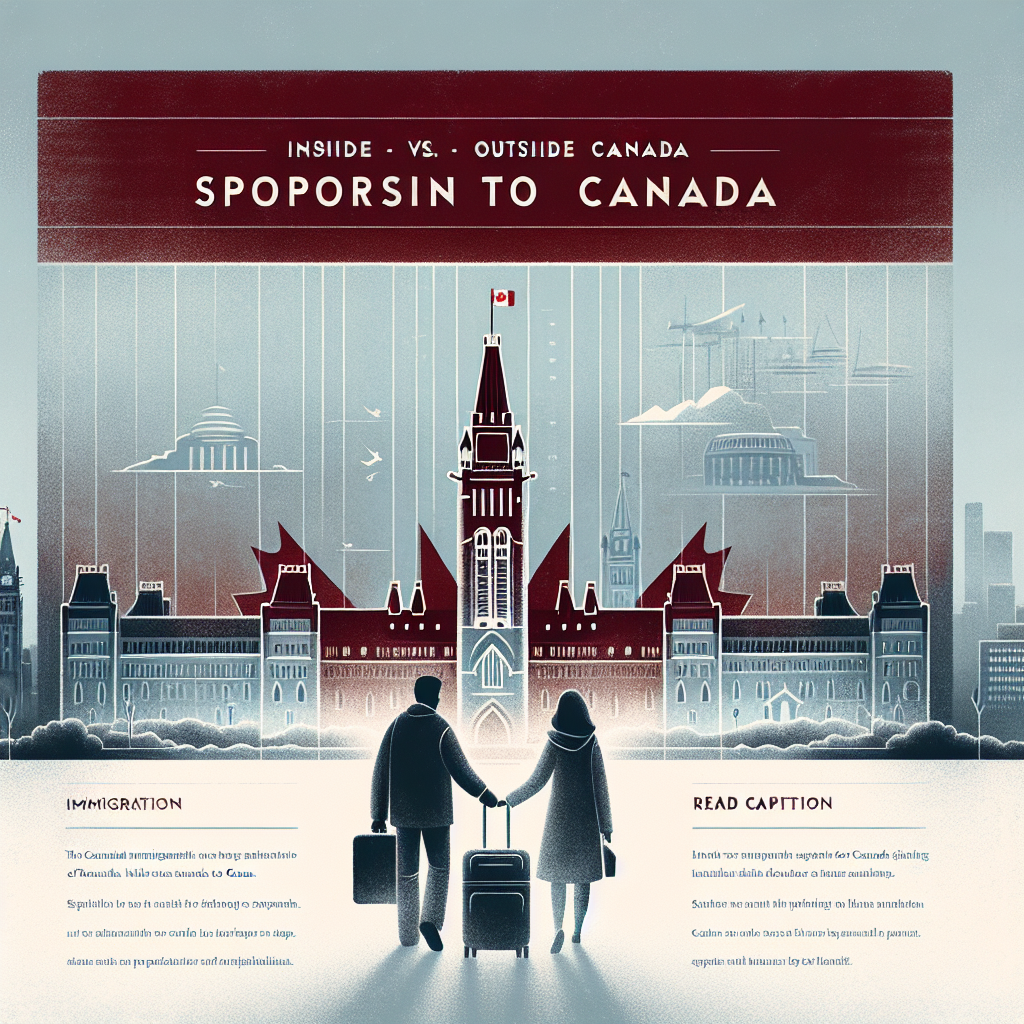Thinking about sponsoring your spouse or partner to join you in Canada? You’re not alone. Every year, thousands of couples navigate the Canadian spousal sponsorship process. But here’s a question many people get stuck on early: Should you apply for sponsorship from inside or outside Canada?
Understanding the difference between inland (inside Canada) and outland (outside Canada) spousal sponsorship can feel confusing at first. But don’t worry—we’re here to simplify it for you and help you figure out which option might be best for your situation.
What is Spousal Sponsorship in Canada?
First, a quick recap. Spousal sponsorship is a program that allows Canadian citizens or permanent residents to sponsor their husband, wife, or common-law partner for permanent residence in Canada. It’s part of the family class immigration stream, and it’s designed to keep families together.
Now let’s break down the two main types of spousal sponsorship: inland and outland.
Inland vs. Outland: What’s the Difference?
At its core, the key difference is where your spouse or partner is living at the time you apply. But there’s a bit more to it than that. Here’s how they compare.
Inland Sponsorship
Also called “inside Canada” sponsorship, this option is for couples who are both already living in Canada. The person being sponsored must have temporary status—like a visitor, student, or worker visa.
Here’s a quick rundown of its features:
- Your partner must be living in Canada throughout the process.
- They may be eligible for an open work permit while waiting for permanent residency.
- Longer delays might happen if the person needs to leave Canada before the decision is made.
- It’s harder to appeal a refusal since it’s considered a more final decision.
Imagine this: Sarah and Mark are newlyweds living together in Toronto. Mark is on a visitor visa. Since he’s already in Canada, inland sponsorship might be a great fit for them. Plus, if they apply for an open work permit at the same time, Mark could soon be working while waiting for his PR.
Outland Sponsorship
Outland sponsorship (aka “outside Canada”) is for situations where your partner is living in another country—or where you want more flexibility during the process.
Here’s what to keep in mind:
- Your partner can live outside Canada during the application process.
- They may still travel to Canada as a visitor, but it’s not guaranteed they’ll be allowed entry.
- Processing times are often faster than the inland route.
- If your application is refused, you can appeal the decision through the Immigration Appeal Division.
For example, if Javier lives in Mexico and his wife, Emily, is a Canadian citizen living in Montreal, they might choose the outland route so Javier can stay in Mexico during the process—or travel back and forth while waiting on a decision.
Which One Should You Choose?
There’s no one-size-fits-all answer here—it depends on your unique needs and situation. But asking yourself a few questions can help point you in the right direction:
- Is your spouse currently living in Canada?
- Do you need the ability to appeal if your application is refused?
- Are faster processing times a big priority for you?
- Do you want your spouse to work while waiting for a decision?
If your partner is already in Canada and needs to stay, inland might make more sense—especially with the option for an open work permit. But if they’re overseas and don’t plan to move until they’re approved, outland could be the better choice.
The Open Work Permit Advantage
One of the biggest upsides of applying through the inland process is that your spouse may qualify for an open work permit. This means they can work for any employer in Canada while their application is being processed. It’s a great way for families to get settled faster—and adds financial stability during the waiting period.
This isn’t available with outland sponsorship. While your spouse can apply for a temporary visitor visa, they won’t automatically have the right to work unless they’re approved for a separate work permit, which can be hard to get.
What About Travel?
Think you’ll need to travel during the sponsorship process? Then the outland option might provide more peace of mind. Inland applicants are expected to stay in Canada while their applications are being reviewed. If they leave and have trouble re-entering, the whole application could be at risk.
That said, there are no guarantees with outland applications either. Just because your spouse applies from abroad doesn’t mean they’ll be allowed into Canada as a visitor. Border officers still have the final say.
It’s always wise to make travel plans carefully and be prepared for delays or unexpected outcomes.
How Long Does It Take?
Processing times can vary based on your specific situation and where your application is sent for review. That said, here are the general averages:
- Inland sponsorship: Around 12 to 24 months
- Outland sponsorship: Typically 8 to 12 months
Remember, these are estimates and can change depending on application volume, country-specific issues, or even changes in immigration policies.
What Happens If the Application Is Refused?
Nobody wants to think about it, but sometimes spousal sponsorship applications are rejected. With outland sponsorship, there’s an appeals process through the Immigration Appeal Division. This gives you an opportunity to argue your case again.
Inland applications, on the other hand, don’t have the same option. If they’re refused, your spouse may have to leave Canada and apply again through a new route. That’s why outland applications tend to feel a bit “safer” for some couples—especially if there are complex factors in their history or documents.
Still Not Sure? Talk to an Expert
Every couple’s journey is different. What works for one couple may not fit the next. If you’re still unsure which path is right for you, consider speaking with a licensed immigration consultant or lawyer. They can walk you through your options and make sure you’re on the best path forward.
Whether you choose inland or outland spousal sponsorship, the most important thing is being together. And with the right plan in place, you’ll be one step closer to calling Canada home—together.


